It is late March 2022, and as always the weather is sunny in Tucson, Arizona. But a big meeting gathers a binational party inside an air-conditioned building on campus. For the first time since the onset of the Covid-19 pandemic, French scientists from the National Center for Scientific Research (CNRS) were able to come meet their counterparts of the University of Arizona (UA), to celebrate the launch of a partnership between the two institutions, which started officially in 2021. Through this partnership, the two parties hope to foster collaborative, complementary research, especially on the theme of the environment. One highlight of the collaboration is the potential for joint projects making use of a facility called Biosphere 2.
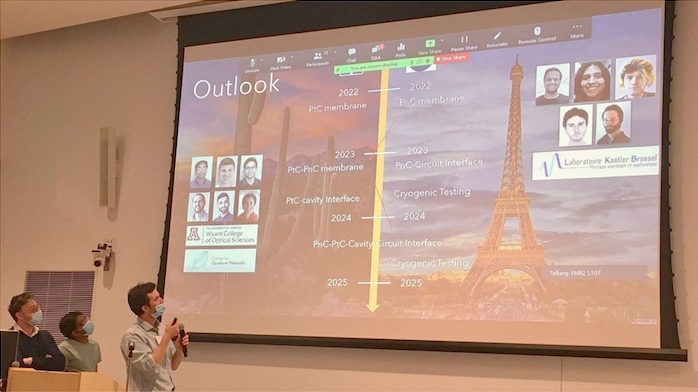
Fig. 1: The UA-CNRS launch conference in Tucson, March 2022. Image from CNRS, used with permission.
Biosphere 2 (B2, see Fig. 2) is a grand, sci-fi-looking dome-shaped infrastructure in Oracle, an hour’s drive from Tucson in the desert of Arizona, where scientists-entrepreneurs attempted in the 1980s to reconstruct a minimal biosphere and have eight humans live in it for two years. It has been an actual attempt at supporting human life in a closed dome reconstituting several biomes such as a small ocean, a tropical rainforest, a savannah and a mangrove alongside human habitats and a farm. The very name “Biosphere 2” signaled its founders’ intent to build a laboratory version of Biosphere 1, i.e. the Earth. Since 2009 the facility was taken over by the University of Arizona, and has been used for research on individual biomes rather than as a whole life-support system with human missions.
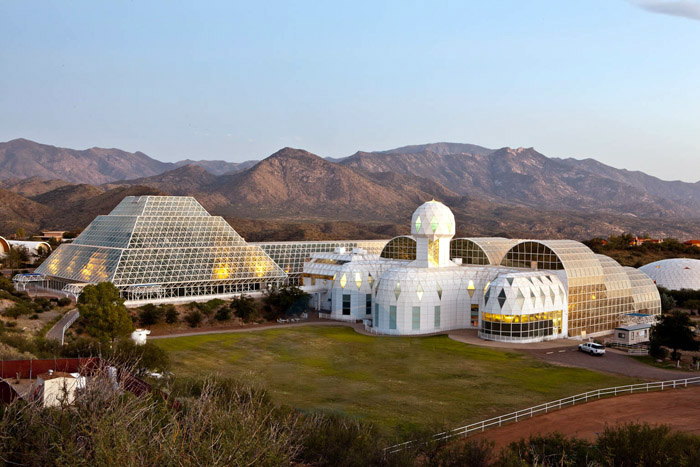
Fig. 2: Biosphere 2, in Oracle, AZ. Image by Johndedios (CC BY 3.0).
Whilst visiting the site with the CNRS delegation, Régis Ferrière, evolutionary ecologist and deputy director of the thus inaugurated France-Arizona Institute for Global Grand Challenges, stresses the potentiality of cross-laboratory experimentations with the French Ecotrons. Ecotrons are experimental facilities in ecological science, controlling for environmental parameters through confinement. Whether near Paris or Montpellier (where the two French Ecotrons are based – see figs. 3a,b), ecologists use such laboratories to control and monitor various environmental parameters, ranging from temperature, humidity, CO₂ concentration, or pressure.
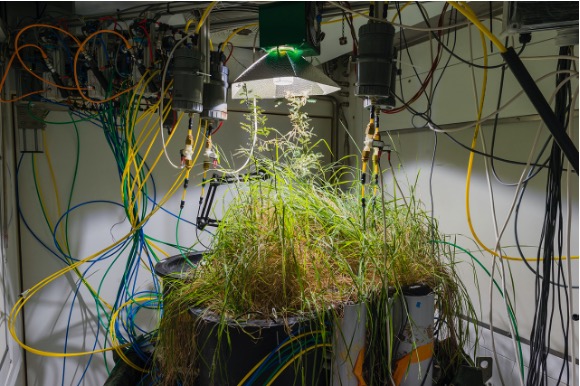
Fig. 3a: Île-de-France Ecotron. Image from CNRS, used with permission.
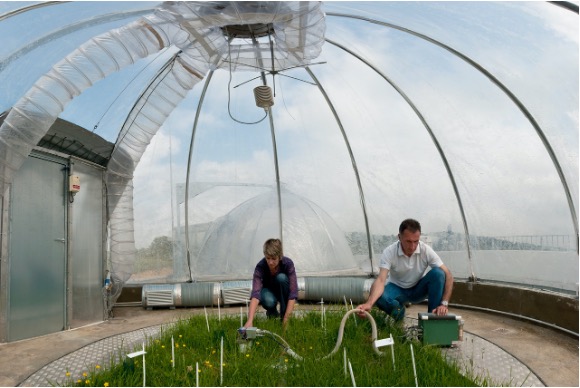
Fig. 3b: Montpellier Ecotron. Image from CNRS, used with permission.
Biosphere 2 and Ecotrons are distant cousins, kin of some sort, somehow connected by a longer genealogy of scientific thought on ecosystems. And they are even more tensely so through the work of Régis Ferrière: Pr Ferrière participated in the launch of the Île-de-France Ecotron (near Paris) as per his part-time affiliation with a French university, whilst working with colleagues at Biosphere 2 through his Professorship at the University of Arizona. One could go as far as saying the two facilities are twins—at once artificial twins of “natural” ecosystems, but also of one another. Not simply by virtue of their shared genealogies of closed worlds (Kallipoliti, 2018) and of -tron-like facilities (Munns, 2017, e.g. phyotrons), but also through their active twinning through institutional partnerships.[1]
As a French anthropologist conducting fieldwork in the US,[2] such twinning could not help but resonate with a longer imaginary of America as utopian twin of the Old Continent (see Fig. 4). How many cities are named “New [Insert your favorite European town]”? While much is to be said about Biosphere 2 as artificial twin for Biosphere 1, the collaborations between France and Arizona got me interested in the extent to which the University of Arizona could become “New CNRS.” With this article, I wish to illustrate some of the socio-technical orchestrations such a twinning process entails, highlighting how the experimental definition of an ecosystem gets crafted in translation.

Fig. 4: The Biosphere 2 logo clearly takes the shape of the Americas. Image from University of Arizona, used with permission.
From Oracle, AZ to Saint-Pierre-lès-Nemours, IdF
Maybe Oracle, Arizona and Saint-Pierre-lès-Nemours—a small town of the Île-de-France region (IdF, encompassing Paris)—should be made sister cities, in the same way that Lyon is sistered to Milan. Indeed, a surprising amount of people from these two unsuspecting locales have travelled across the world to the other on purpose. Such was the case of Lisa, a hydrology masters student from the University of Arizona who arrived at the Île-de-France Ecotron on a rainy day of November 2023, with her Eiffel Tower suitcase full of electronic material from Biosphere 2. Lisa was sent to France with the objective to help run an experiment testing within the Ecotron—with more refinement and control capacities—one subprocess of a larger hydrological experiment undertaken at Biosphere 2’s Landscape Evolution Observatory (LEO – see Figs. 5a,b). Lisa’s mission, after realizing Saint-Pierre-lès-Nemours was not exactly where Emily in Paris was shot, was to re-assemble an important piece, an automatic water sampling system used for the big LEO experiment, so it matched the infrastructure of the Île-de-France Ecotron.
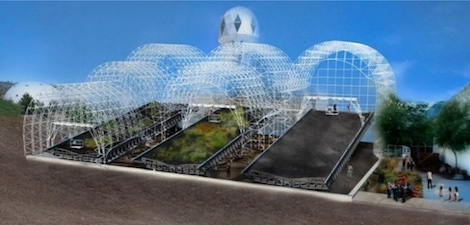
Fig.5a: The Landscape Evolution Observatory (LEO) within Biosphere 2. Image from University of Arizona, used with permission.
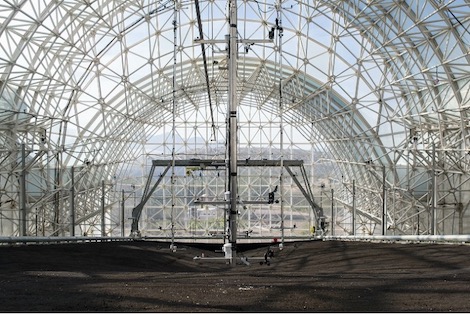
Fig. 5b: The Landscape Evolution Observatory (LEO) within Biosphere 2. Image from University of Arizona, used with permission.
This operation involved a real merging of materials and expertise in order to render the two facilities inter-operable. According to the term’s Wikipedia page, interoperability is “a characteristic of a product or system to work with other products or systems.” “While the term was initially defined for information technology or systems engineering services to allow for information exchange,” the article continues, “a broader definition takes into account social, political, and organizational factors that impact system-to-system performance.” What does it take to make LEO and the Ecotron interoperable?[3] How is it achieved to make tools from one continent work in another?
Here was not just a matter of aligning technical capacities, but a full epistemological adjustment. The challenge was not to simply copy LEO devices into the Ecotron, but to have the latter afford enough modularity as to include hydrological research, which had not been so much the case until then. For that matter, and through a great deal of trial and error, Lisa had to figure how to go back-and-forth between John—electronics specialist at B2—and Romain—PhD student in biogeochemistry at the Ecotron—who himself had to liaise with the local technical engineers to establish a mediation with Lisa. John explained to Lisa how the automatic samplers worked; Lisa explained this logic to Romain—her scientific counterpart (across their disciplinary differences); and Romain translated specifications back to engineers through their shared understanding of how the facility operated.
In turn, the UA side of the consortium contributed to the interoperability of the LEO facility by shipping LEO soil to Saint-Pierre-lès-Nemours. The question of how LEO soil should be shipped had been discussed since the first Zoom meetings between the two teams. Staff at Biosphere 2 tried to recall the way in which samples had been sent the previous time in 2008, but they could not retrieve the corresponding documentation. LEO manager David thereby organized the logistics, coordinating the packing of LEO soil into two large square woodboxes and the delivery through Le Havre harbor to the Ecotron. Although seemingly trivial, one of the interoperability operations he underwent was getting used to French postal and customs semantics—a conversion process that was clearly not to be taken for granted, given the time that the Ecotron director subsequently had to invest in actually getting the parcel retrieved from Le Havre customs and delivered to Saint-Pierre-lès-Nemours. In sum, as part of the transatlantic cooperation, it was not only LEO technical material that had to merge with the Ecotron, but also the experimental substrates from the original facility.
Here the experimental definition of an ecosystem happens precisely at the “interface” engineers refer to when dealing with interoperability. In the face of multiple experimental practices, the ecosystem becomes whatever Lisa and her colleagues make it as expertise and socio-technical choices travel across the Atlantic. There is no such thing as a pure ecosystem, only—to paraphrase Annemarie Mol (2002)—an Ecosystem Multiple, found surprisingly at the intersection of twinning or sistering of different practices for composing ecosystems. The family resemblance emerges from a certain grammar connecting the various sites, interoperability being the one I witnessed between Oracle and Saint-Pierre-lès-Nemours. Here the New and the Old continents only exist in relation to one another. LEO and the Ecotron are not different understandings of an a priori object called “ecosystem.” There is no Biosphere 2, nor a mimicked Biosphere 1, but only Biosphere 1 ½.
New Moscow
In April 2022, I flew from Tucson and reached the city of Moscow. Oh sorry, Moscow, Idaho—Northwest of the US—to be more specific. Moscow is home to the University of Idaho, where two scientists, Sean and Isaac, had not long before raised money through a National Science Foundation (NSF) grant for intermediate-sized equipment. Sean and Isaac had been aware of European Ecotrons for a while, and they had seen in the NSF grant an opportunity to launch an Ecotron at their university. Theirs would be different from its counterparts in that its subject matter would be a specialized field of soil science: deep soil (see Fig. 6). When I first met with the Deep Soil Ecotron (DSE) colleagues, Isaac explained how they “want[ed] to position [themselves] as the American hub for Ecotrons.” What does it mean to be an Ecotron hub? What does it mean to build a facility that claims to investigate ecological systems comprehensively, while having to situate it—and even to actively think its design—in relation to other “miniature” ecosystemic facilities?
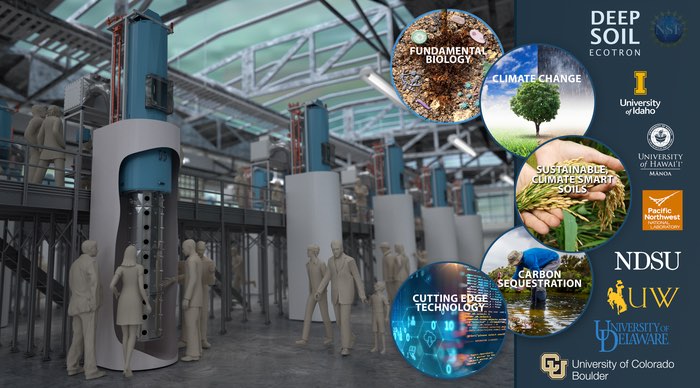
Fig. 6: Prototype image for the University of Idaho’s Deep Soil Ecotron. Image from University of Idaho, used with permission.
I went to visit Isaac and his colleagues at the University of Idaho because I was interested in the decisions that were being taken at the early stages of the design of an Ecotron. But this notion of “hub” made me interested in the extent to which the production of knowledge by a controlled ecological system facility is yet again situated geographically and socially. And in this case, through a modality whereby the will to subscribe to the newly devised category of “Ecotron” implies an analogical crafting of each facility. Furthermore, when Isaac told me that he, Sean, and a few other co-PIs would travel to Europe to visit and learn from existing Ecotrons, I became all the more interested in the process through which the Deep Soil Ecotron would be designed in analogy to the European Ecotron facilities.
So, across 15 days in April 2023, Sean, Isaac, and I reunited, alongside DSE technical engineer Dan and two other colleagues from the DSE advisory board. Together we toured some of the European Ecotrons I had already visited. From Leipzig to Hasselt, passing through Montpellier and Saint-Pierre-lès-Nemours, my Moscow colleagues refined the contours of what their facility was to retain from existing models but also depart from and innovate towards.
In this context, building an Ecotron is not just about the facility itself, but also about its analogical positioning within a global network of similar facilities. The DSE must balance its unique, geographically grounded research focus with the expectations placed on it as a new iteration within the Ecotron typology. This analogical mode of knowledge production—where each new Ecotron becomes a version of the broader “Ecotron” idea—thus both stabilizes and shifts the concept of ecosystemic research. In the end, here too there is no pure ecosystem that experimental facilities would get to twin. Experimental “ecosystems” emerge from the relation between facilities. The DSE case shows how ecosystems are defined relationally, not only through interoperability (as with LEO), but also through ever-analogical definitions: the “ecosystem” idea is located at the meeting point of fully-interdependent instantiations by various experimental facilities across continents.
Ornithorynque
In a talk given in Paris in September 2024, American environmental anthropologist Cymene Howe suggested we should institutionalize “Sister Cities for the Anthropocene”— twinning locales whose fate are entangled within climate change, such as Iceland and Cape Town, or Greenland and Honolulu, where water melts to flow from the former to the latter. In a somewhat similar vein, my argument here has been that we should follow not just water, but also expertise and automatic samplers in order to make sense of how Ecosystems Multiple are being defined pluralistically across transatlantic collaborations of scientists and engineers producing ecological knowledge in times of environmental crisis.
Yet whilst funding for science is being dramatically threatened in the U.S., who knows how long ecosystems will continue to find their definition across the ocean. In France too, “nous sommes Debout pour les Sciences”.
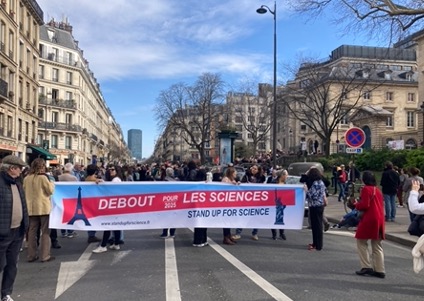
Fig. 7: The Stand Up for Science France march in Paris, on March 7th 2025. Photo by author.
I can thus only express gratitude for the chance to write this Ornithorynque blog post, in a will to foster more anthropological exchanges between North American and French-speaking communities. I hope to meet more of you at AAA in la Nouvelle-Orléans (!).
[1]Note that the French Ecotrons were not explicitly designed in reference to B2, however present the model might have been for Pr Ferrière.
[2]The scholarship through which my PhD project was funded was co-designed by Pr Ferrière and was itself focused on comparing such closed ecological systems.
[3] Conceptually, engineers make the distinction between ‘interoperability’ and ‘compatibility’ — the latter being a more restricted notion concerning the capacity of two entities to work together (e.g. a word-processing software being able to read .odt-formatted documents), whereas the former implies the creation of a standard for the objects’ interfaces that is independent of any entity-specific innovation with respect to the ‘intrinsic’ function of the object (e.g. the implementation of USB-C plugs for all computer devices and smartphones). In this regard, the interoperabilization process between LEO and the Ecotron is effectively more than a matter of compatibility, which in sociological terms would amount to a translation between the same phenomena encoded in different languages, in a somewhat unidirectional manner; or else what Latour (1991) would refer to as the “calibration” of one system against the other. Inter-operability is also not commensurabilization, or standardization, in the sense of generating something common from the merging of different entities, because two Ecotrons are still not dissimilar enough for the notion of commensurability to make sense. Inter-operability is also stronger than mere inter-entity harmonization, like two countries adapting and harmonizing their fiscal policies for their residents who are citizens of the other country; it is stronger in the sense that the two entities cooperate in producing joint science.
This post was curated by Contributing Editor Adair Steig.
References
“Interoperability.” Wikipedia, The Free Encyclopedia. Last modified August 30, 2024. Accessed August 30, 2024. https://en.wikipedia.org/wiki/Interoperability.
Kallipoliti, L. The Architecture of Closed Worlds. Zürich: Lars Müller Publishers, 2018.
Latour, B. We have Never been Modern. Cambridge: Harvard University Press, 2011.
Mol, A. The Body Multiple: Ontology in Medical Practice. Durham: Duke University Press, 2002.
Munns, D. P. D. Engineering the Environment: Phytotrons and the Quest for Climate Control in the Cold War. Pittsburgh, PA: University of Pittsburgh Press, 2017.
